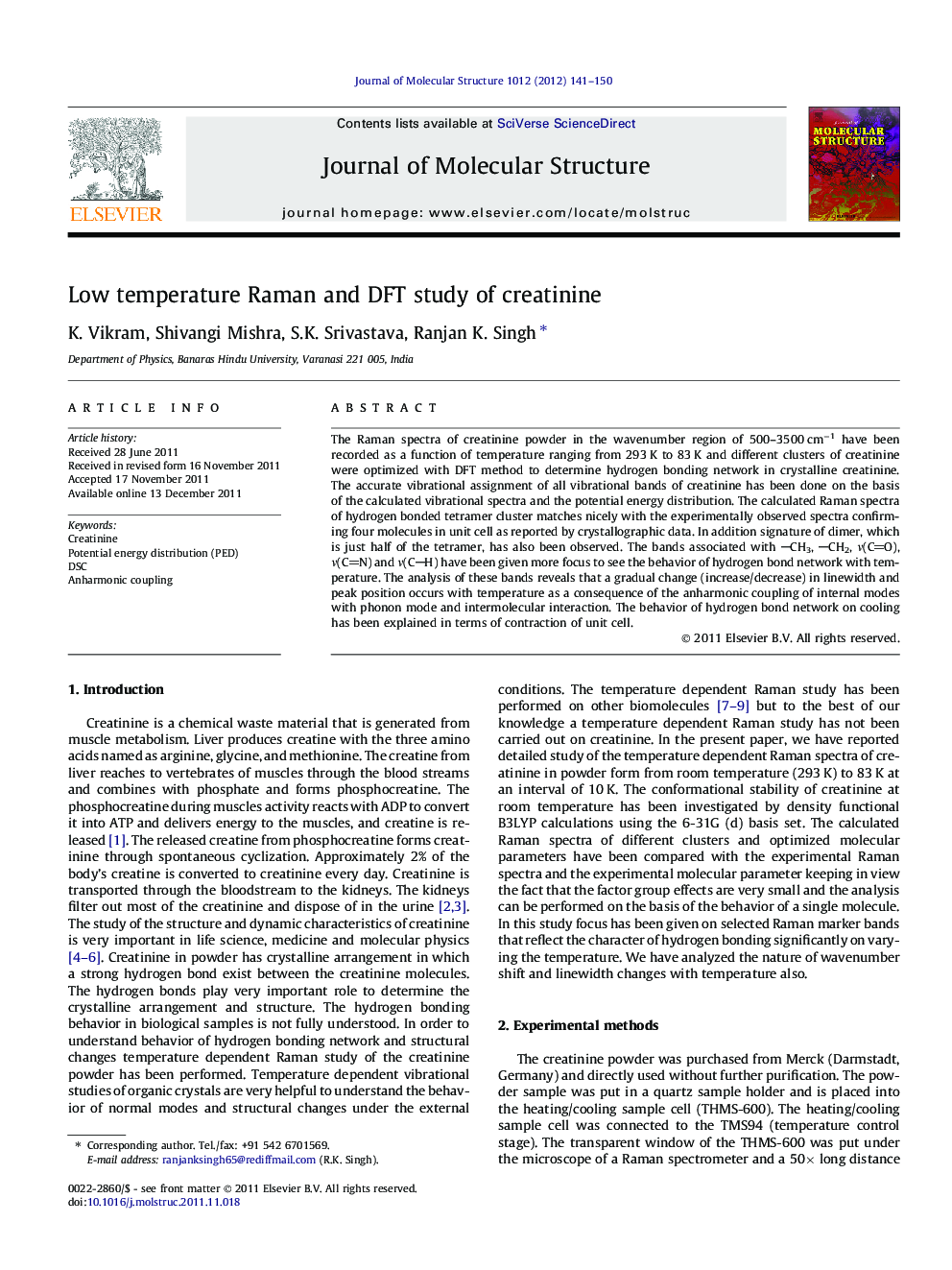| Article ID | Journal | Published Year | Pages | File Type |
|---|---|---|---|---|
| 1405752 | Journal of Molecular Structure | 2012 | 10 Pages |
The Raman spectra of creatinine powder in the wavenumber region of 500–3500 cm−1 have been recorded as a function of temperature ranging from 293 K to 83 K and different clusters of creatinine were optimized with DFT method to determine hydrogen bonding network in crystalline creatinine. The accurate vibrational assignment of all vibrational bands of creatinine has been done on the basis of the calculated vibrational spectra and the potential energy distribution. The calculated Raman spectra of hydrogen bonded tetramer cluster matches nicely with the experimentally observed spectra confirming four molecules in unit cell as reported by crystallographic data. In addition signature of dimer, which is just half of the tetramer, has also been observed. The bands associated with CH3, CH2, ν(CO), ν(CN) and ν(CH) have been given more focus to see the behavior of hydrogen bond network with temperature. The analysis of these bands reveals that a gradual change (increase/decrease) in linewidth and peak position occurs with temperature as a consequence of the anharmonic coupling of internal modes with phonon mode and intermolecular interaction. The behavior of hydrogen bond network on cooling has been explained in terms of contraction of unit cell.
► Temperature dependent Raman spectra of creatinine were studied. ► Vibrational assignment has been made using potential energy distribution. ► Tetramer structure of creatinine is most likely in the crystalline arrangement. ► The molecules are more tightly packed with some orientational effect at lower temperature.
